- UK Pension Scheme
- Q4 2021
- Total portfolio (public and private markets, alternatives)
- GBP 10 billion
- Benchmark fees, support strategic planning
- Fee Review
Our specialist says:
The bfinance team were incredibly helpful—they provided high quality data on fees and costs but more importantly for us, expert analysis and advice on likely trends. They were able to adapt their approach as we firmed up our requirements and supported us all the way through the process. The final report has already proven invaluable as we review our strategic approach to asset allocation and fund manager selection and monitoring for our increasingly diversified portfolio.
Client-Specific Concerns
This UK pension scheme was seeking to benchmark the fees being paid to more than a dozen managers across 20-plus strategies in public markets, alternatives and private markets given the scheme’s rapid growth in assets under management and increasing diversification.
The investor did not necessarily wish to reduce costs but wanted an independent review of pricing and an understanding of how fees for relevant strategies had evolved—and were likely to evolve—through time. This analysis included an effort to gain insight into the relationship between ESG integration and fees to better understand how the industry’s ESG pricing premium had developed—and to what extent it was still evident in managers’ varied strategies. This process was intended to contribute to the client’s broader strategic review of asset allocation and use of investment managers.

Outcome
- Developing meaningful peer groups for price comparison: rather than relying on asset class or sector level fee data from its own extensive fee database, the bfinance team established relevant peer groups that reflected strategy specifics and investment sizes. Analysis also considered the investor’s strong focus on ESG and the interaction between fees and overall cost of access.
- Identifying potenital savings: analysis highlighted strategies in which market fees had shifted but the client’s fee arrangements had not been revised for several years. Given that investors often overlook the fees being paid for passive strategies, this analysis included passive exposures, such as allocations to a passive Global ESG Equity strategy and a passive Shariah compliant Global Equity strategy.
- Assessing ESG complexity: our analysis indicated that the client was overpaying for some strategies with an ESG tag. Pricing for ESG Equity strategies is complex because the asset management industry offers a spectrum of strategies with an ESG label, ranging from negative screening to dedicated impact strategies. This breadth requires careful assessment of the specific product offering because a proportion of these strategies may not necessarily warrant a premium fee structure solely on the basis of their ESG label.
- Adding insight to the manager line-up: quantitative and qualitative inputs on fees were supplemented by additional information on the fund’s managers; this data was intended to provide support in the event of future renegotiation. Business instability, team departures and relevant market dynamics were noted, with the support of dedicated asset class specialists.
- Supporting the overall investment journey: Insight on fees across different strategy types and the impact of mandate size on pricing helped the investor to assess the likely pricing impact of potential strategy developments and reallocations. The team adjusted the scope and detail of research during the engagement as the investor’s requirements evolved.


 English (Global)
English (Global)  Deutsch (DACH)
Deutsch (DACH)  Italiano (Italia)
Italiano (Italia)  Dutch (Nederlands)
Dutch (Nederlands)  English (United States)
English (United States)  English (Canada)
English (Canada)  French (Canada)
French (Canada) 
